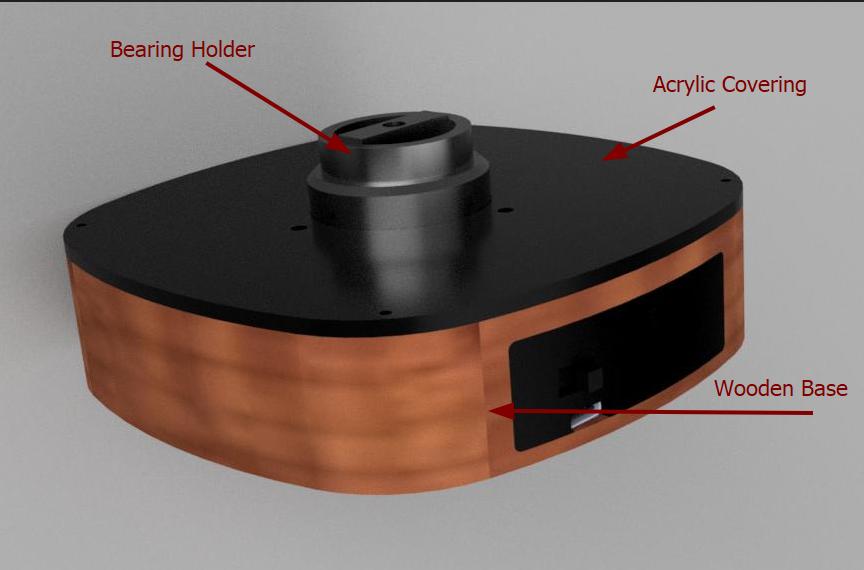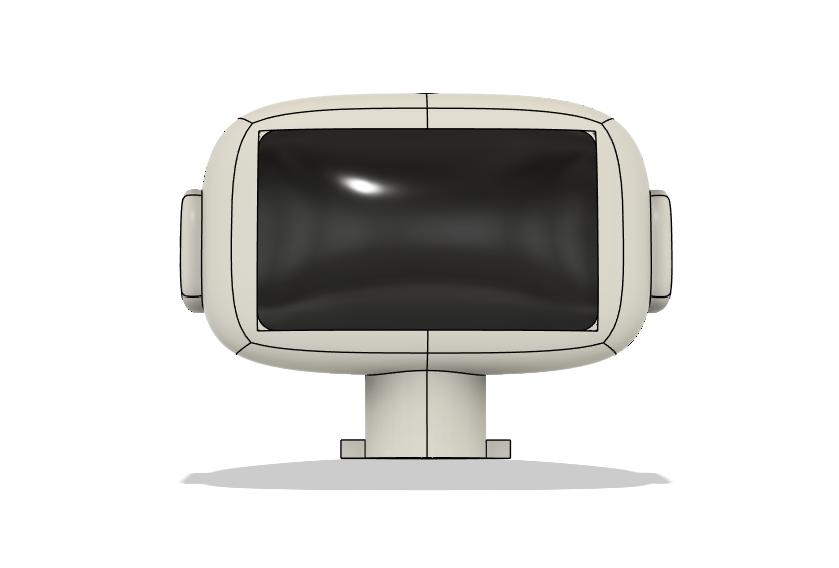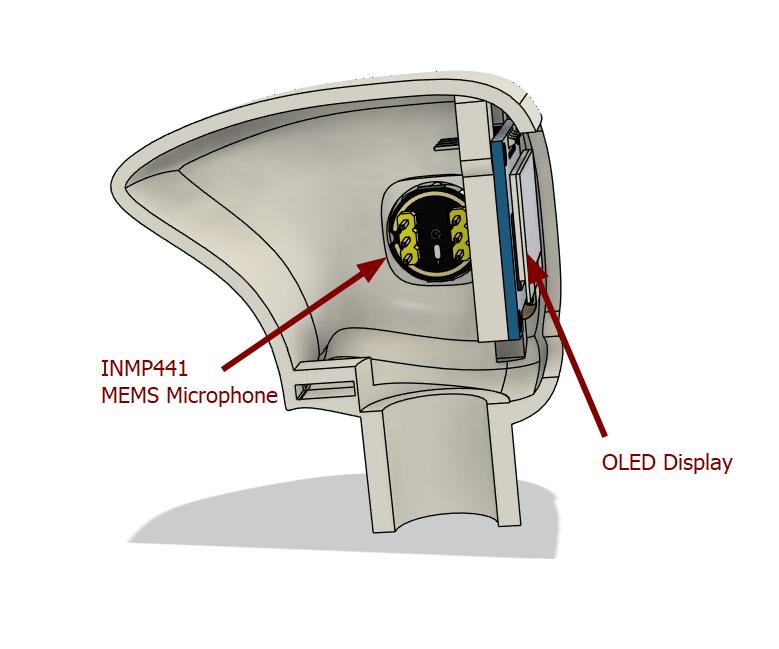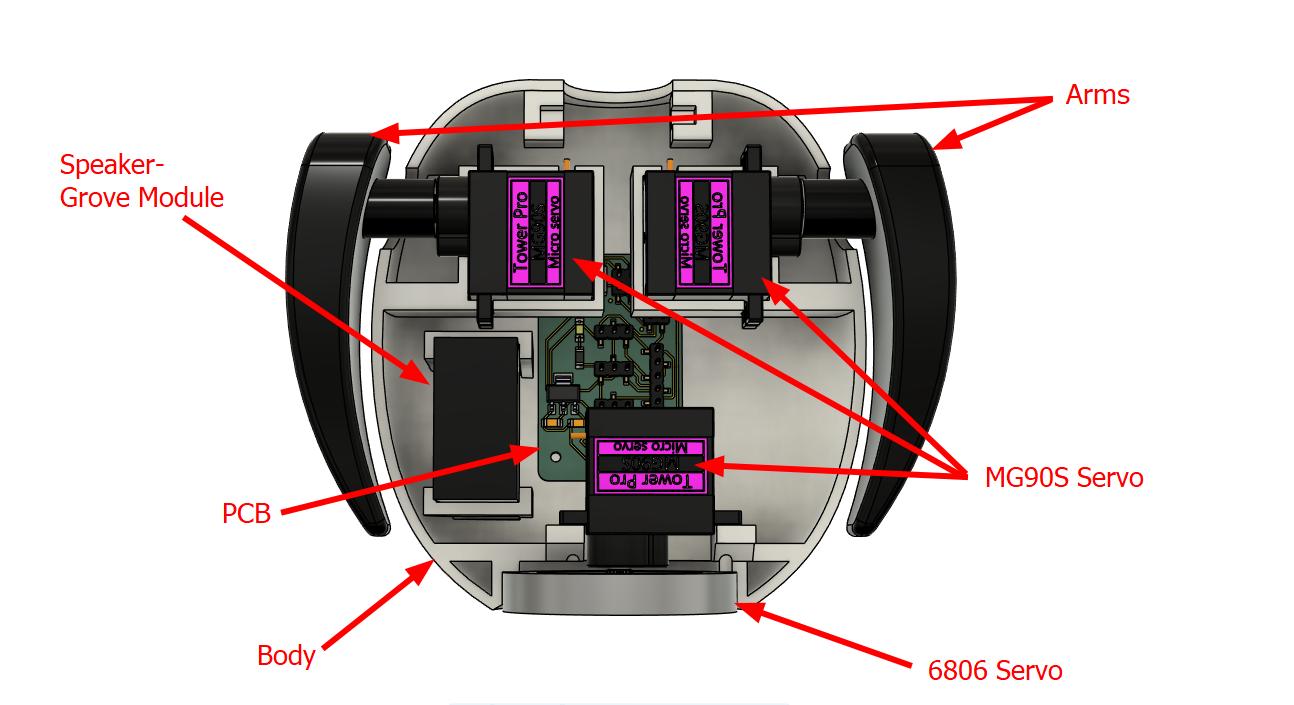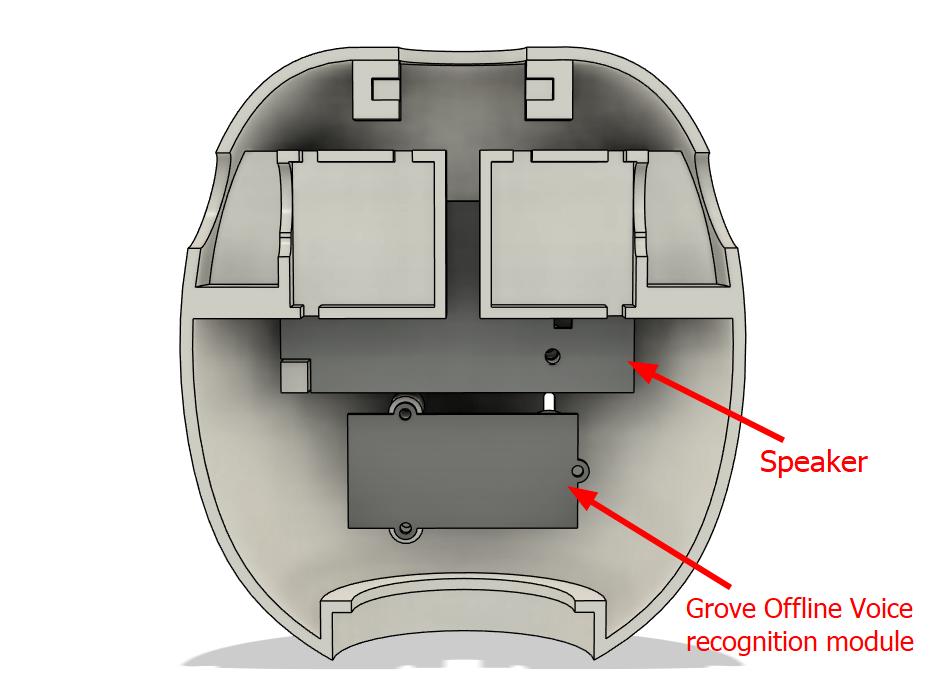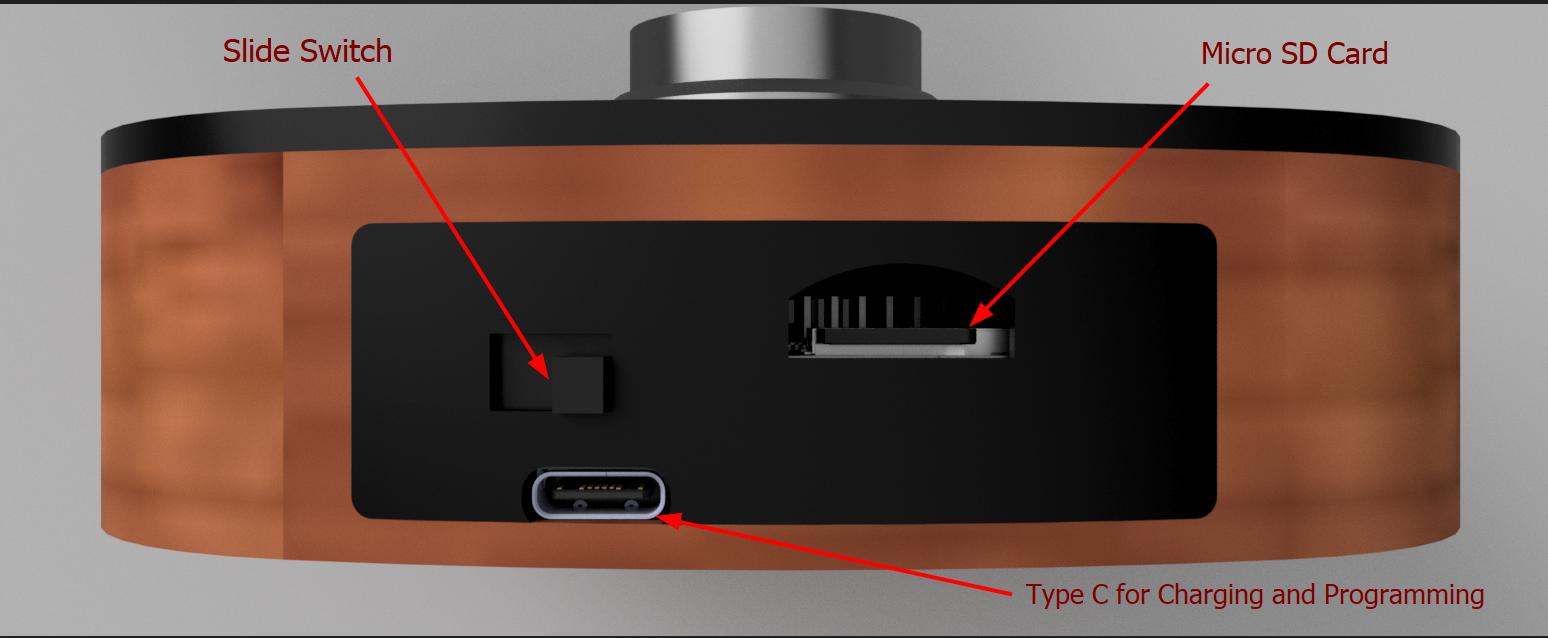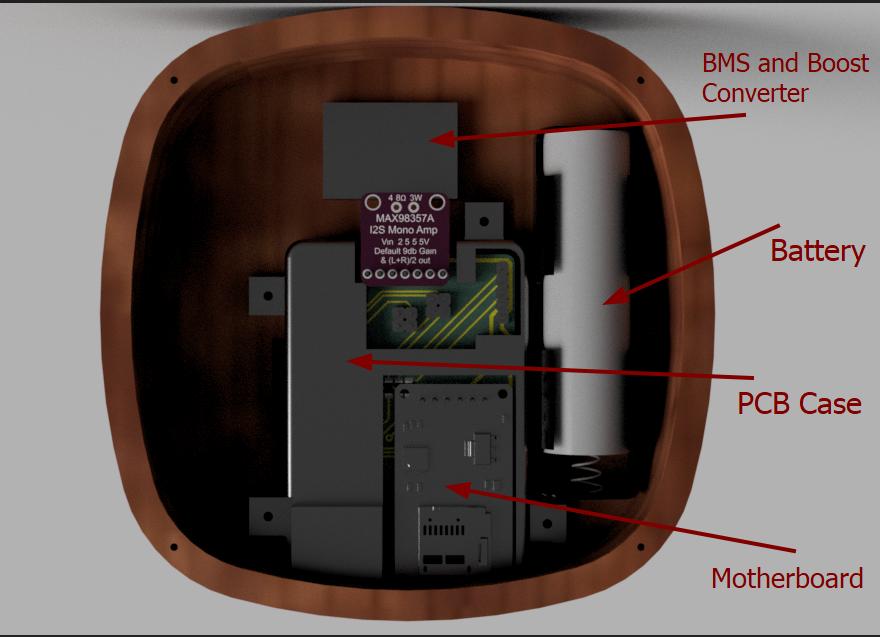Design
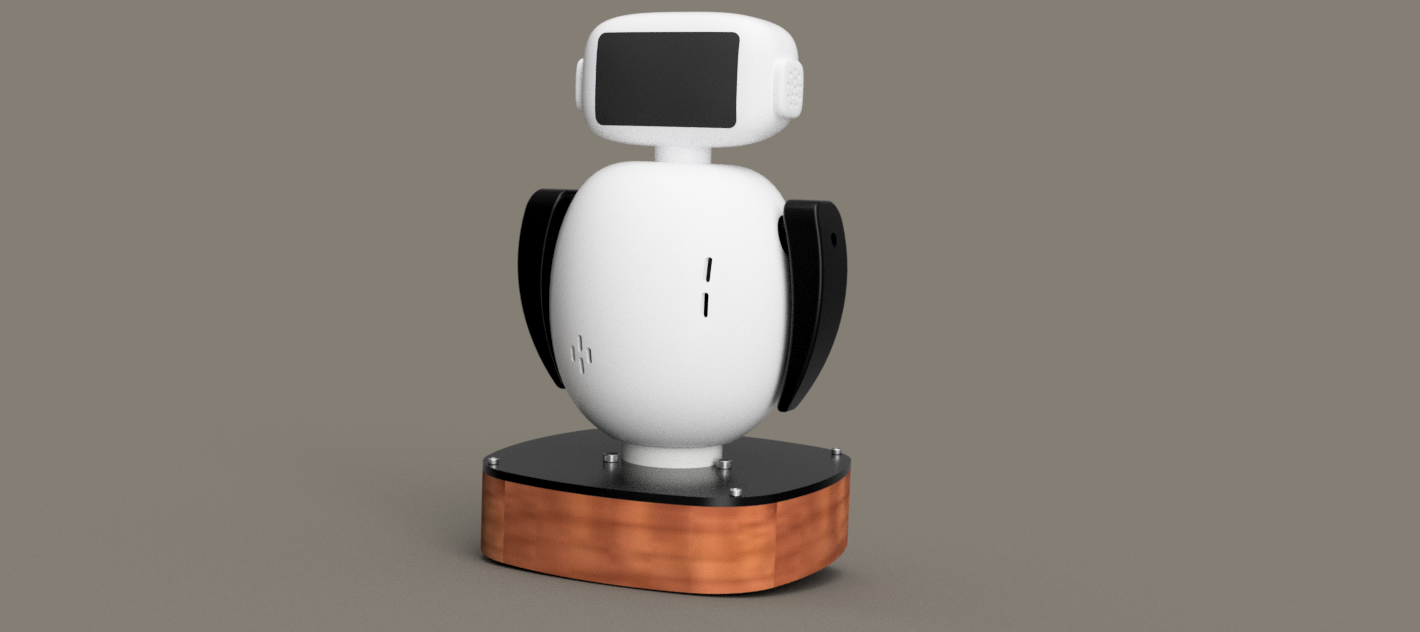
Parts and systems to be developed include the main body of the toy, moving arms, a rotating base, and a facial display to emulate eye expressions. The body will be 3D printed using PLA for a lightweight and durable structure, while the base combines wood and acrylic for stability and aesthetic appeal. The electronics system is centered around the ESP32 microcontroller, integrated into the base, and includes additional circuitry for motor control and display output. The toy is voice-controlled, utilizing the Grove Offline Voice Recognition module for offline command processing. It also functions as a talking toy, enhancing interactivity. Thorough software-hardware integration and system testing are essential components to ensure seamless performance and user interaction.
Main Parts
- 3D Printed Head- The toy includes a 3D-printed head equipped with two OLED displays to simulate eye expressions. It features two microphones that work together to enable voice interaction and detect the direction of sound for body rotation. A capacitive touch sensor is also integrated on the top of the head to enhance user interactivity.
- 3D printed body- The toy features a 3D-printed body that houses key components including a Grove Offline Voice Recognition module, a speaker, and three servo motors—two for arm movement and one for body rotation. A custom-designed PCB is used to manage all connections efficiently, minimizing the number of wires running to the base and ensuring a cleaner, more organized internal layout.
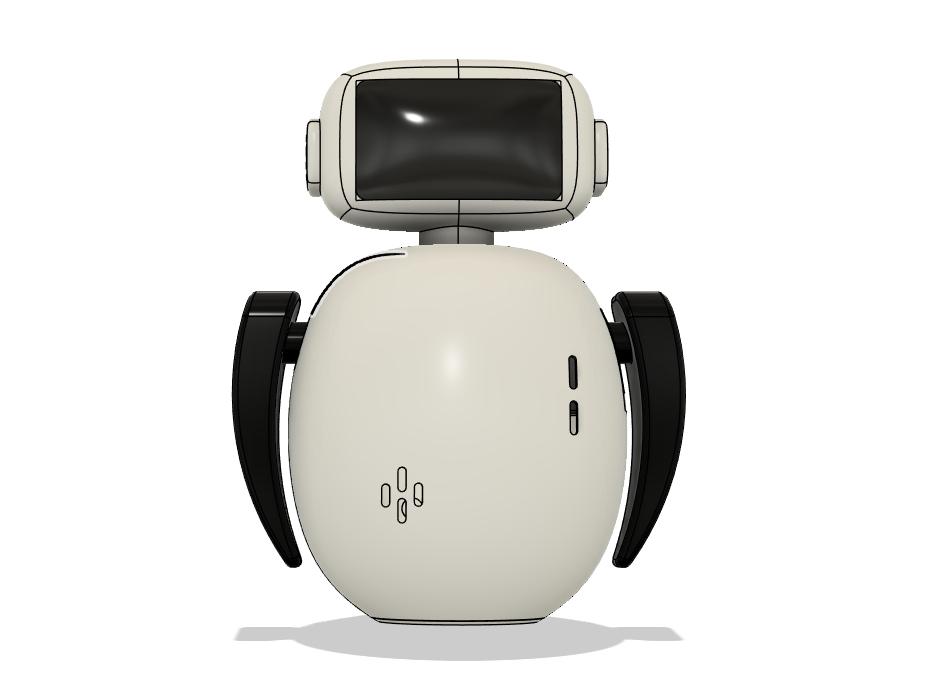
- Wooden base with Acrylic covering- The base is constructed from wood, providing both stability and aesthetic appeal, and is enclosed with an acrylic cover for a polished finish. The battery and the microcontroller PCB are neatly integrated into the base, forming the core of the toy’s power and control system.
